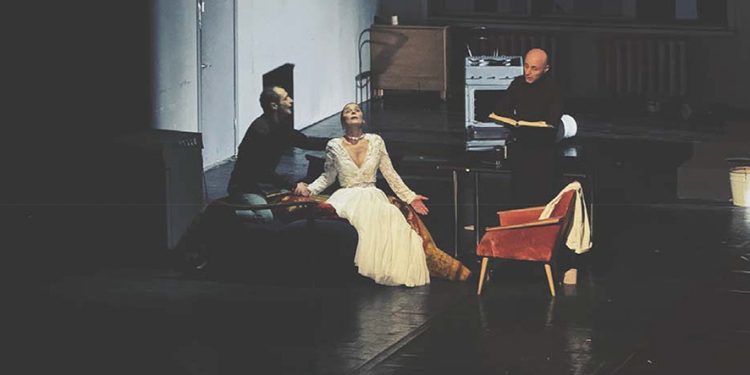Andriy Zholdak’s audacious and surreal take on ‘Bluebeard’ offered a visceral, dreamlike journey into the darkest corners of human relationships. Staged at the Vaso Abashidze State New Theater, this phantasmagoric performance was a central feature of the Georgian Showcase at the Tbilisi International Festival of Theater 2024, and it lived up to Zholdak’s reputation for extreme, avant-garde theatrical experiences. Based on a dynamic fusion of Louise Glück’s poetry, Federico García Lorca’s ‘Blood Wedding’, and the myth of Bluebeard, Zholdak’s production pushes the boundaries of storytelling, transforming these texts into a disorienting landscape of love, violence, and emotional survival.
Zholdak is no stranger to blending phantasmagoria with stark emotional realism, and in Bluebeard, he delves into the complexity of gender conflict, the disintegration of relationships, and the collapse of romantic ideals. Audiences were not merely watching a play—they were plunged into a turbulent dreamscape of poetic chaos where survival feels more real than life itself.
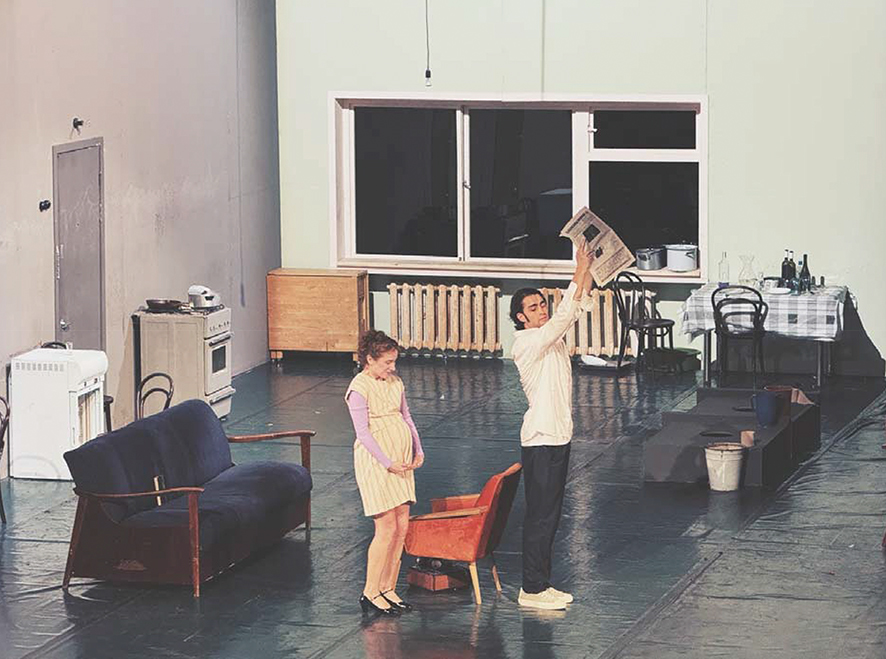
A Collision of Myth, Poetry, and Lorca’s Tragic Fatalism
At the heart of Bluebeard lies a collision of distinct literary forms. On paper, Glück’s contemplative and intensely personal poetry may seem at odds with the mythic brutality of Bluebeard, and Lorca’s tragic fatalism in Blood Wedding stands apart from the psychological horror of Bluebeard’s chamber of secrets. Yet, Zholdak’s genius is his ability to fuse these seemingly disparate sources into a unified, phantasmagoric vision. He draws out the shared emotional core of these works: the agonizing tension between desire and destruction, the terrifying vulnerability of love, and the relentless force of fate.
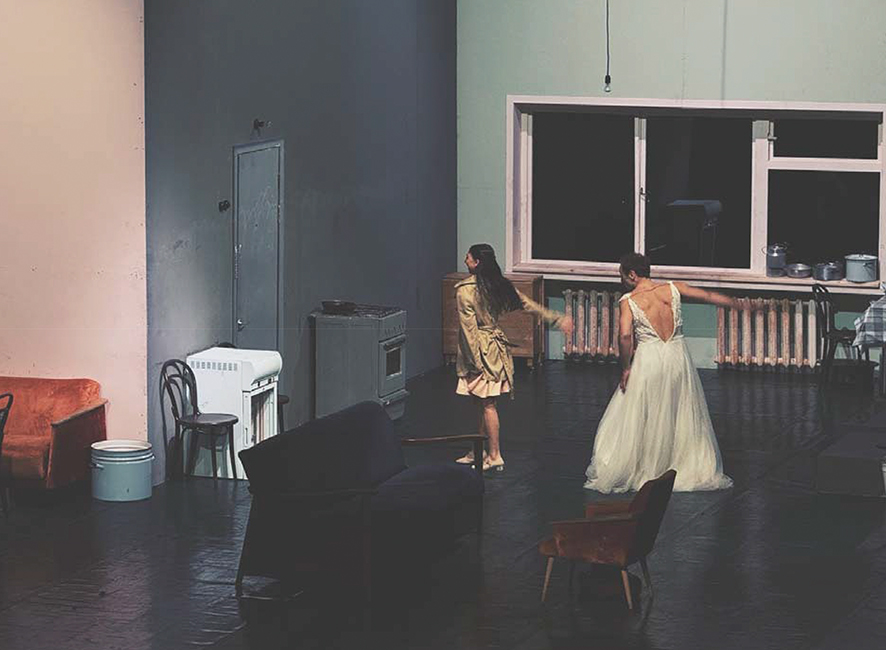
Myth as Reality: Bluebeard is not simply the murderous husband of legend. In Zholdak’s interpretation, he is an almost archetypal figure of toxic masculinity and emotional manipulation, a symbol of the abusive dynamics that continue to shape gender relations today. Played with chilling intensity by Shako Mirianashvili, this Bluebeard is less a villain and more a fractured psyche, embodying the darker sides of love and control. The women around him, played by Nino Kasradze, Nana Butkhuzi, Mariam Balakhadze, and Elena Tavartkiladze, become figures trapped in a nightmarish, repetitive cycle of love, submission, and destruction.
Glück’s Poetic Despair: The lyrical anguish of Louise Glück’s poetry seeps into the emotional fabric of the play. In Bluebeard, the violence is not only physical, but also deeply emotional. Zholdak captures the aching sense of loss and alienation that permeates Glück’s writing, giving the production a haunting psychological depth. The stark contrast between poetic love and its violent demise plays out in agonizing scenes where the women’s internal lives are fractured, marked by a palpable sense of longing for tenderness that is never fulfilled.
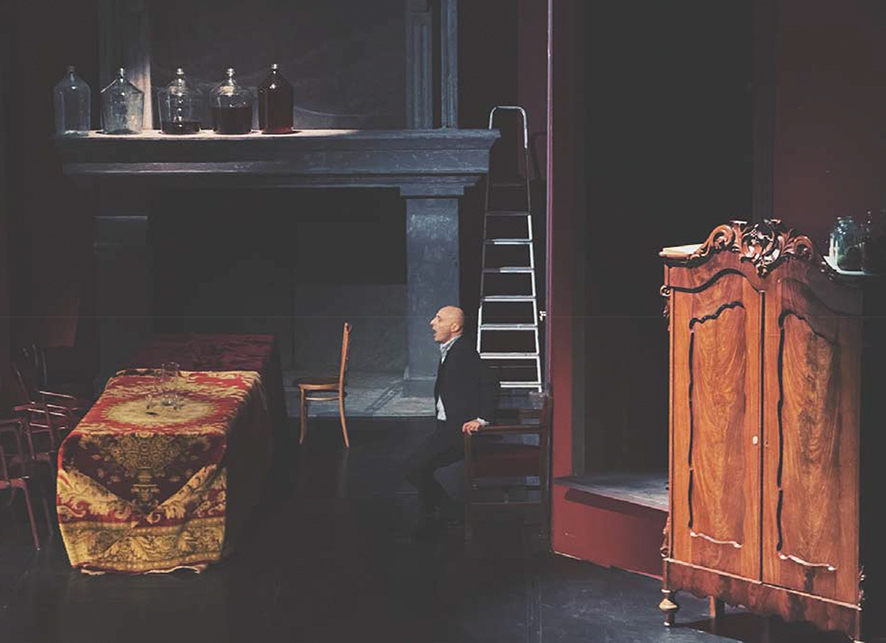
Lorca’s Fatalism: Echoing Blood Wedding, Zholdak introduces Lorca’s preoccupation with fate and the inescapability of death. The cyclical nature of violence, particularly violence between men and women, pulses through the production. In Zholdak’s vision, love is doomed, and passion becomes an inevitability towards destruction. The tragic echoes of Lorca’s Blood Wedding are felt in every scene, as if the characters know their fate but are powerless to stop it.
The Dreamlike Aesthetic: A Sensory Assault of Light, Sound, and Physical Extremity
What makes Zholdak’s Bluebeard so compelling is its ability to overwhelm the senses. The production’s non-linear, fragmented structure mimics a fever dream, where reality dissolves into nightmarish and poetic imagery. With scenography by Daniel Zholdak and lighting by Mikheil Bakradze, the visual design captures the emotional extremes at the heart of the story. The set is minimalist, but evocative, creating spaces that are both timeless and abstract, with stark contrasts between light and shadow transforming the mood from moment to moment.
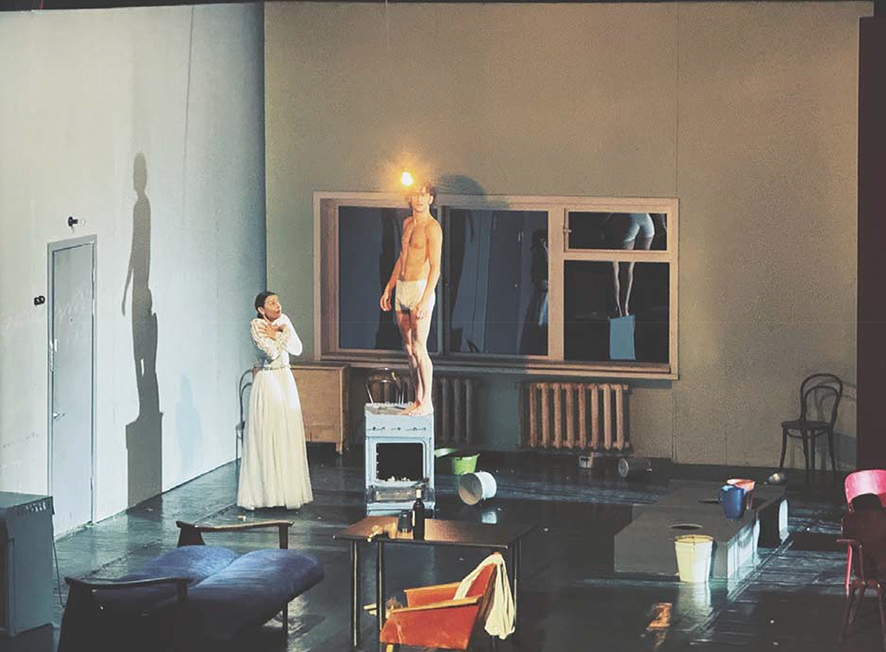
Lighting and Scenography as Emotional Landscapes: The stage design functions less as a place and more as an emotional terrain. Rooms appear and vanish as if conjured by the characters’ emotions, heightening the sense of psychological unease. Bakradze’s lighting choices are essential in crafting this unstable world, at times blindingly bright, then swallowed in suffocating darkness. The constant shifts in lighting and staging mirror the volatility of the relationships on stage.
Costumes as Symbols: Simon Machabel’s costume design is equally symbolic, creating a visual dissonance between myth and modernity. The women are both adorned in ethereal, almost bridal attire, suggesting innocence and purity, yet these garments become metaphors for their entrapment. The costumes heighten the tension between beauty and destruction, as the idealized visions of femininity are slowly undone.
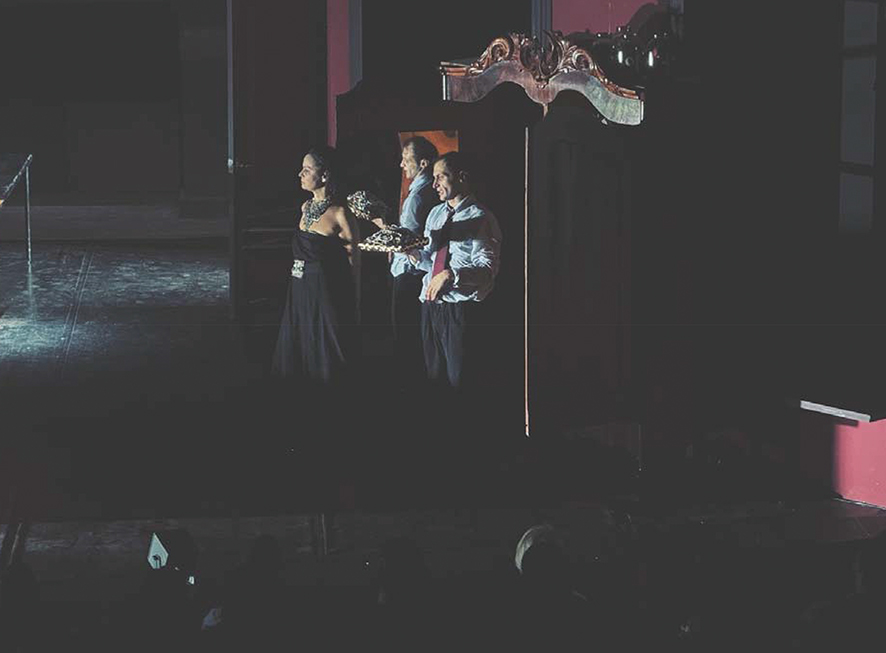
Sound and Silence: Sound director Emzar Begiashvili’s score is not merely a backdrop but an active participant in the play’s emotional assault. Jarring, eerie sound effects and moments of stark silence work in tandem to create a feeling of dread. Sound becomes a tool of psychological manipulation, reflecting the internal chaos of the characters.
Zholdak’s Actors: Emotional and Physical Extremes
The actors, led by Nino Kasradze as Bluebeard’s wife, give performances that are physically and emotionally demanding. Zholdak is known for pushing his actors to extremes, and in Bluebeard, this extremity takes on a visceral dimension.
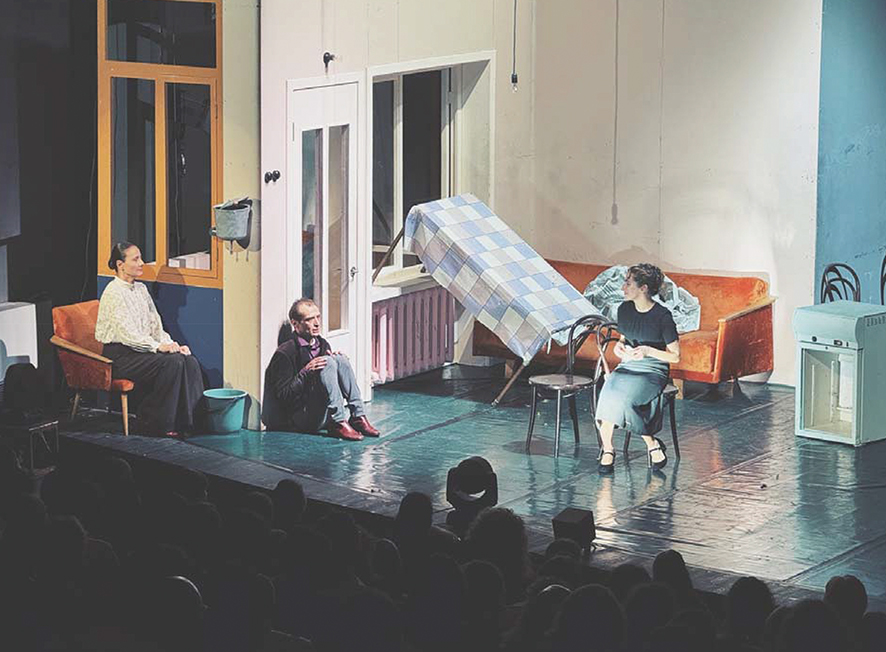
Kasradze’s portrayal of the wife is a tour-de-force of vulnerability and defiance, capturing the inner turmoil of a woman trying to survive the crushing emotional violence of her relationship. Her body becomes a battleground for conflicting emotions—fear, desire, resignation—resulting in a portrayal that is both harrowing and deeply moving.
In Zholdak’s hands, the actors’ movements and gestures become more significant than dialogue. The emotional impact of Bluebeard is conveyed through physicality—the way characters interact, retreat, or explode with rage. Silence and stillness are as important as the moments of heightened emotion, creating a performance that feels raw and immediate.
Survival and the Battle of the Sexes: Zholdak’s Vision of Gender and Power
The central theme of Zholdak’s Bluebeard is survival in the face of impossible emotional conditions. The women in the play are caught in a seemingly unbreakable cycle of love, betrayal, and destruction. Their struggle is not just with Bluebeard but with the very nature of the love they have been conditioned to accept.
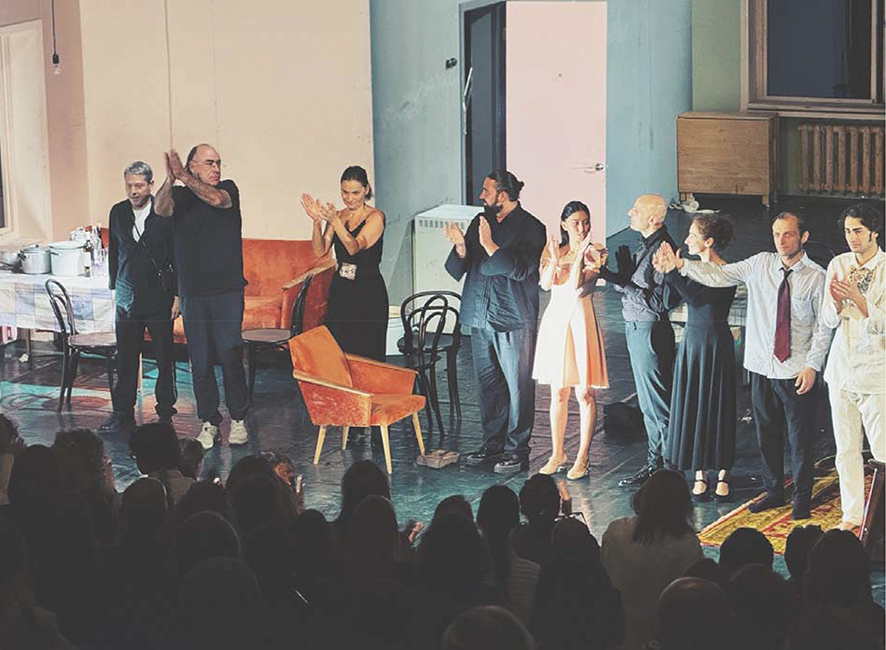
Zholdak’s Bluebeard takes a hard look at the dynamics of power in relationships, particularly the insidious ways in which love can become a form of control. The character’s survival is a question not just of physical safety but of emotional endurance—can they survive the battle for their autonomy? In this production, the battle of the sexes is a battle for psychological survival, and it is fought in a world where love has become a weapon.
‘Bluebeard’ as Zholdak’s Phantasmagoric Triumph
Zholdak’s Bluebeard is a masterclass in phantasmagoric theater, an immersive sensory experience that challenges the boundaries of conventional narrative and performance. It is not an easy watch—its emotional intensity, disorienting structure, and dark themes make it a demanding production. But for those willing to plunge into Zholdak’s surreal world, the rewards are immense.

Blending the mythic with the poetic, the brutal with the tender, Bluebeard is a haunting meditation on the collapse of love, the inevitability of violence, and the desperate need for survival in a world where relationships are governed by power. Through his use of fragmented narrative, stunning visual design, and the emotional extremes of his actors, Zholdak creates a theatrical experience that lingers long after the final scene—both in the mind and in the heart.
By Ivan Nechaev

